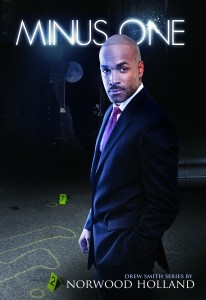Zora Neale Hurston and Langston Hughes: A Woman Scorned
December 22, 2011
 Zora Neale Hurston was in Eatonsville while Fannie Hurst was in Manhattan writing Imitation of Life suggesting there was little if any communication on the project. However that didn’t prevent Sterling Brown and Langston Hughes from accusing Zora of providing the source material.
Zora Neale Hurston was in Eatonsville while Fannie Hurst was in Manhattan writing Imitation of Life suggesting there was little if any communication on the project. However that didn’t prevent Sterling Brown and Langston Hughes from accusing Zora of providing the source material.  In a note to Fannie, Zora claims that as mistaken as both were she didn’t deny it and took the accusation as the highest of compliments. Sterling Brown wrote a scathing review in Opportunity magazine while the work inspired Langston Hughes spoof Limitation of Life.
In a note to Fannie, Zora claims that as mistaken as both were she didn’t deny it and took the accusation as the highest of compliments. Sterling Brown wrote a scathing review in Opportunity magazine while the work inspired Langston Hughes spoof Limitation of Life.
Langston Hughes and Zora Neale Hurston’s friendship lasted five years and ended in jealousy and perhaps an unrequited love. In the Spring of 1927 Langston was invited to read his poems at Fisk University’s Commencement exercises. From there he planned to do another reading in Texas but the Great Mississippi Flood cancelled those plans. A change took him South where he ran into Zora in New Orleans. She was touring the South in her own car, collecting materials for research. Together they spent several weeks driving through the rural South collecting folk songs and stories.
They returned to Harlem and Hughes introduced Hurston to his patron the “Park Avenue Godmother” Charlotte Mason. Under Charlotte Mason’s sponsorship they began to collaborate on a play Mule Bone. Mason hired a third Harlem Renaissance figure Louise Thompson to do the typing for $150 a month. Zora found Louise and Langston growing a little too cozy. Then one can only surmise by some mischief concocted by Zora, Louise was suddenly fired. Hughes wanted Louise to continue typing and offered to share author credits. Zora opposed the idea and with only two acts completed Hurston packed up and took off on another tour taking the notes and manuscript.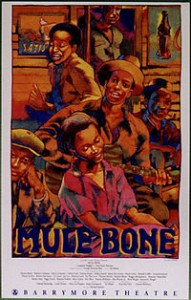
Despite his great affection for the Godmother Hughes was feeling controlled, beholden and with his creativity stifled their relationship deteriorated and not long after she cut him off. The financial and emotional toll stressed him into a psychosomatic illness. He returned to his mother’s home in Cleveland to recuperate. As fate would have it he discovered Hurston had copyrighted the play and was in the process of negotiating the rights with the Jelliffe’s of the Gilpin Players, the Black theater company long associated with Cleveland’s Karamu House.
Things blew up and Zora traveled to Cleveland supposedly to smooth things out admitting Langston was a co-author. But when she arrived at Langston’s home for a meeting with all the parties she discovered Louise Thompson was in town. A big blow out ensued with Zora acting out. In her crazy way she did an about face disavowed Langston’s authorship baffling the Jelliffes and disrespecting Langston mother who he had to physically restrain. He was also recovering from a tonsillectomy and barely able to talk.
The friendship never mended. Zora would later confess to Arna Bontemps how sorry she was for her behavior admitting her jealousy of Louise Thompson. A romantic entanglement is not hard to imagine. Hurston understandably was in love with Hughes. They were after all in their twenties and he was strikingly good looking. Zora didn’t mention Langston in her memoirs and he politely referenced her as Miss Hurston in his. The play would not be performed until 1991 on Broadway to negative reviews. Critics all in agreement expressed regret the play was never finished. To use Langston Hughes’ words: Girls are funny creatures.
Mysticism in Latino Writing
November 20, 2011
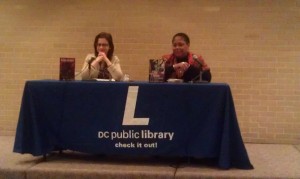
The MLK Library presented a Saturday afternoon book discussion on Mysticism in Latino Writing featuring authors Lyn Di Iori and Dahlma Llanos Figeroa. The authors discussed the role of mysticism in their novels. Lyn Di Iori’s Outside the Bones and Dahlma Llanos-Figueroa’s Daughters of the Stone are both receiving rave reviews. Iori’s Outside the Bones is an erotically charged ghost story set in both present-day New York and Puerto Rico. Praised as her brilliant debut novel it takes a mesmerizing look at issues of race, class, power and greed with Afro-Caribbean witchcraft rituals deftly woven through a sixteen year mystery unraveling a woman’s disappearance.
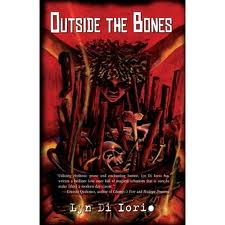 Figueroa’s Daughters of the Stone follows a sacred stone handed down five generations used to invoke mystical powers and rituals of the old ones. A rich sensual tale of mothers and daughters, love and sorrow, hardship and pride the novel through conjuring up the spirits renders a magical, deeply real, and vividly told story surrounding diasporic people.
Figueroa’s Daughters of the Stone follows a sacred stone handed down five generations used to invoke mystical powers and rituals of the old ones. A rich sensual tale of mothers and daughters, love and sorrow, hardship and pride the novel through conjuring up the spirits renders a magical, deeply real, and vividly told story surrounding diasporic people.
Both authors of Puerto Rican descent have chosen to raise the voice of the American Latina, half of the nation’s largest growing ethnicity, a segment of our culture not often heard. The powers of the Santeria, a religious practice with its African origins and Catholic influences and Puerto Rican spiritualism lie at the heart of both novels. Highly talented both authors continue a renaissance of award winning Latina writers exposing an American experience so long overlooked.
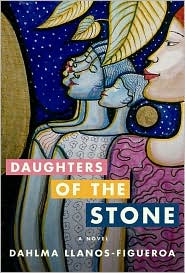
It has been said “Latina writers are powerful and seductive in their works. Their writings encompass the feelings women have in different situations, from dealing with a male-dominated society to family relationships.” No doubt the same can be said of the works of Iori and Dahlma. After readings the discussion ended with the interested patrons peppering the authors with questions about their themes, writing habits, and the Puerto Rican experience.
MLK Librarian Kathy Jenkins ended the program enthusiastically promising future similar author events. MLK Library and MahoganyBooks partnered in producing the program with the support of More Than Words (www.morethanwordsliterary.com) and Go On Girl! Book Club and Las Comadres.
Hurston and Hurst: Setting the Record Straight
November 10, 2011


A big fan of Turner Movie Classics at some moment last month I became interested in Fannie Hurst learning she was the source of some my favorite movies Four Daughters, Humoresque, Backstreet and not the least of which Imitation of Life. A cursory internet search revealed that Zora Neale Hurston worked as Fannie Hurst’s maid while another article stated she was a friend and secretary. A student of the Harlem Renaissance and African American Literature my interest grew more intense in the Hurst/Hurston relationship and their interaction with Harlem Renaissance photographic chronicler Carl Van Vechten. Their interconnectedness will be fertile ground for literary scholars in years to come, but I had a more pressing question. Which was it, secretary, friend or maid? I suspected a bit of all three, and tilling the rich details of my research suspicions were confirmed.
Fannie Hurst was the first female to earn lucrative pay writing short stories at the beginning of the 20th century. Coveted magazines like McCalls and Cosmopolitan and publishers like Hearst newspapers fiercely competed for her stories the early subjects of which where tales of boarders, German-Russian-Jewish immigrants and the $12 a week shop girls probing their loves, dramas and traumas. Fannie Hurst had a rare talent for stories that tugged at the human heart earning her the reigning title as the leading “sob sister.” She was an avid supporter of the day’s popular socialist causes, liberal, humanitarian and feminist as well as a forceful supporter of the rights of African Americans.
The two authors first met on May 1, 1925 at Opportunity magazine’s first literary awards banquet sponsored by the National Urban League. As judges Eugene O’Neil and James Weldon Johnson were in attendance amongst 316 others representing New York’s literary who’s who. More than seven hundred entrants competed for the eight hundred dollars in prize money in the categories of best short story, poem, play, essay, and personal experience sketch. Langston Hughes took first prize for his collection of poems The Weary Blues. Zora Neale Hurston took two second prizes for her poem Spunk and her play Color Struck. Fannie Hurst presented Zora Neale Hurston the poetry award.
Their friendship began at the after party where Van Vechten, Fannie Hurst and author and feminist activist Annie Nathan Meyer the founder of Barnard College where all completely taken with Hurst’s captivating brilliance. Meyer secured Hurston’s admission to Barnard College enabling her to complete the degree started at Howard University. Hurst and Van Vechten served as patrons providing some support toward tuition and living expenses. Hurst hired Hurston as a secretary but Zora had horrible secretarial skills and was reduced to running errands. Hurston also from time to time found it necessary to moonlight as a maid.
Hurston served in some capacity as maid, driver, gofer and secretary. The women shared a life long friendship and on Hurston’s death Fannie wrote, “Zora had the gift of walking into hearts, she herself was a gift to both her race and the human race.”
So I was right, but now I have another nagging question. What influence if any did Hurston have on the writing of Imitation of Life?



